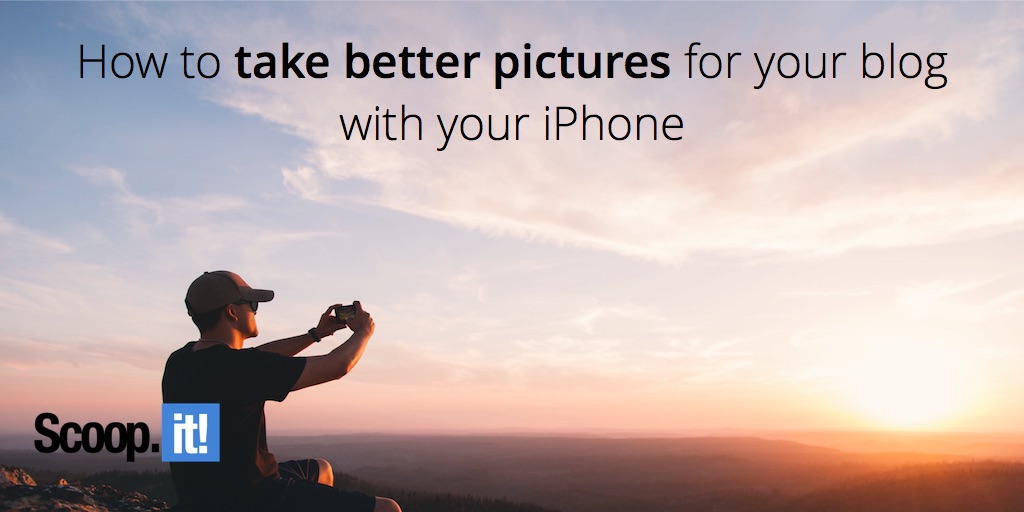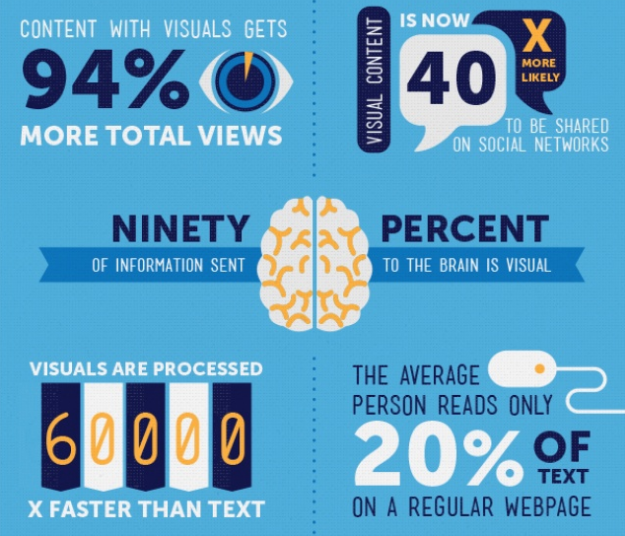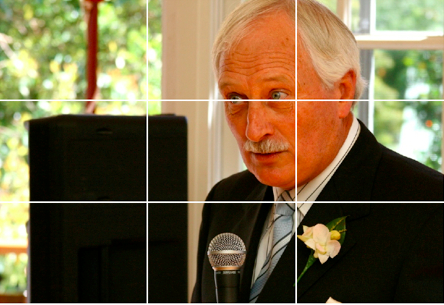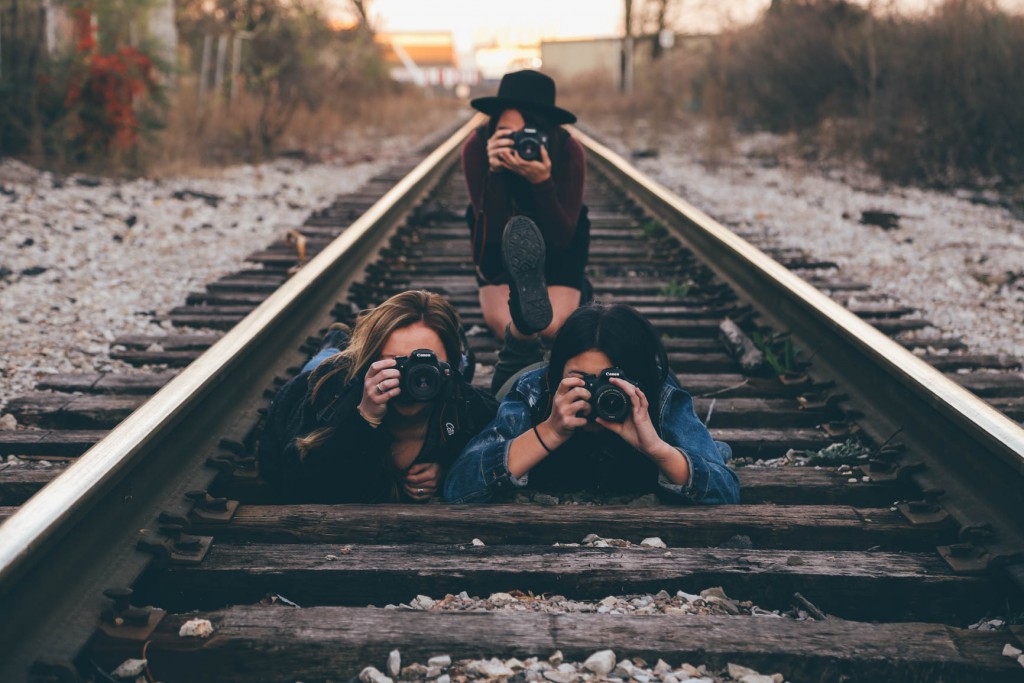
As you’ve probably noticed, one of the biggest keys to successful blogging in 2016 is the ability to diversify content in a visually pleasing manner. However, if you’ve been at it long enough, you also know how challenging it can be to find high quality imagery that fits your content.
If this sounds familiar, then it may be time to try a new strategy.
Do pictures really matter?
Gone are the days when a few paragraphs of text sufficed as a successful blog post. Today, you need a handful of images and visuals to engage visitors and encourage sharing.
Need proof?
Consider the following statistics presented in the below infographic from Ethos3:

Image credit: Ethos3
“The brain processes images far faster than text,” internet marketer Neil Patel explains. “Creating an attention-grabbing image at the top of your article is simply a great way to engage users and encourage them to read the article.”
But it doesn’t stop with just an image at the top. Including a variety of images throughout the body of your post keeps users focused and prevents them from losing interest and wandering away.
A failure to include quality images will result in high bounce rates, minimal conversions, and a noticeable lack in backlinks and social shares.
Why stock images aren’t always effective
With so much emphasis on visuals, most bloggers turn to popular stock image sites to find free and easy pictures that can be effortlessly integrated just before publishing. You need to be careful with stock photos, though.
Outdated and irrelevant. Stock photos are notorious for lacking relevancy. While you may be writing an article about work-life balance, is a picture of a man wearing a suit and typing on a laptop in a poolside cabana really effective? No – it looks ridiculous!
Lack genuine emotion. While stock photos feature pretty people making exaggerated facial expressions, the truth is that they lack genuine emotion. As designer Kathleen Burns says, “A generic image of smiling people staring blindly into the distance will not bridge the connection between your brand and your customers. The photos need to look real to be believable to your customers.”
Overused and recycled. If you can find and use a stock photo, so can every other blogger on the internet. Do you really want to reuse the same image that thousands of other websites are using for other pieces of unrelated content?
Stock images are convenient, but they aren’t always effective. In fact, they can actually hurt your content and damage your brand’s reputation.
Five tips for smartphone photography
The good news is that you don’t have to pay thousands of dollars for original photography or settle for cheesy stock photos – there’s another option. Using nothing but the smartphone in your pocket, you can start taking incredible images to use on your very own blog.
Here are some tips to help you make the most out of your pictures:
1. Follow the rule of thirds
Are you familiar with the rule of thirds? It states that every image can be broken down into three vertical rows and three horizontal rows, as in the below example:

Image credit: Darren Rowse
This creates nine unique “boxes.” The theory is that placing the points of interest at the intersection of any two lines makes an image feel more balanced and natural.
The convenient thing about using an iPhone is that you can actually turn on gridlines to line up your shot and use the rule of thirds. (For what it’s worth, most other smartphones have a similar setting, including the Samsung Galaxy.)
2. Negative space is good

Image credit: 贝莉儿 Ng
Contrary to popular belief, you don’t need to fill your entire image with subjects. Embrace negative space and leverage the benefits of simplicity.
“When it comes to composing great photos, use simplicity to your advantage,” marketer Lindsay Kolowich suggests. “When you include a lot of empty space, your subject will stand out more and evoke a stronger reaction from your viewer.” Examples of negative space include large walls, sky, water, or grass.
3. Lighting leads the way

Image credit: Steinar La Engeland
If there’s one thing that separates average photos from professional pictures, it’s good lighting. Over time, you’ll learn some different lighting techniques and how they impact images, but start by experimenting with dark silhouettes.
“A silhouette is where the subject and other objects appear very dark or completely black against a brighter background,” photographer Karyn Teno says. “To create a silhouette you need to have a light source, such as the sun or a bright sky, behind the subject. The golden hours of sunrise and sunset are the perfect time for shooting silhouettes because the sun is low in the sky and the colors are stunning.”
Teno also suggests playing around with shadows, reflected light, and even artificial light to get some unique photos that stand out against traditional images that are bland and lifeless.
4. Leverage unique perspectives

Image credit: Jonathan Tieh
Anybody can take a picture of something head on. The key is to take a normal scene and make it unique by switching up the angle or perspective. Try getting down low and taking a picture with the phone pointing up. This will make the subject appear larger. Try getting up higher and looking down. This will add some depth to the image.
When you combine a unique vantage point with good lighting and a little negative space, a scene that’s been photographed thousands of times before becomes original and worthy of your blog.
5. Take lots of pictures

Image credit: Seth Doyle
You never know when you’re going to write your next post and will need a couple of images. Instead of putting yourself in a position where you have to take pictures – or, god forbid – rely on stock photos – make sure you always have some extra images on hand. You can always delete a few pictures, but it’s not as easy to take more.
Get started today
Stock photos are always an option, but they’re rarely the best option. Instead of settling for generic images that have nothing to do with your content, start taking original photos that you own. It’s the quickest way to enhance the value of your blog without spending thousands of dollars on professional photography. Grab your phone and get started!
If you want to get 30 effective techniques to master content marketing along with valuable insights from 10+ influencers like Mark Schaefer, Rebecca Lieb, Lee Odden, Jason Miller or Ian Cleary, download our free eBook now!

Image by Jordan McQueen.

